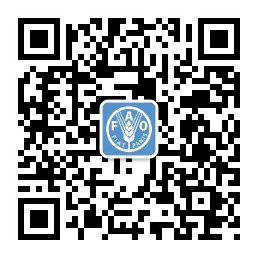The Lens, platform for innovation cartography, now available through Research4Life

The Lens is now available as a resource through all Research4Life programs. What started out as a patent database is now a rich resource of linked information on scholarly communications and innovation. Research4Life talked to Osmat Jefferson, Director of Product Development, and Mark Garlinghouse, Director of Business Development at The Lens to learn more.
What is The Lens?
Osmat Jefferson, Director of Product Development, said: “The Lens is an independent public resource built on a corpus of global patent records and metadata of scholarly publications, which are connected through their citations. The combined scholarly data and patents give researchers and innovators unique opportunities for discovery and analytics.”
“Knowledge around information is strongly siloed. Our mission is to reduce friction in innovation for all participants. To do this, we build tools that bridge scholarly and patent information silos needed for innovation and make information accessible and usable as a public good.”
Why is a platform like The Lens necessary?
Mark Garlinghouse, Director of Business Development, said: “As a global society, we are facing unprecedented crises ranging from climate change, COVID-19, food supply and so forth. We can only solve these through collective innovation. The Lens is important because it makes its toolkits universally accessible, empowering a new and an alternative generation of problem-solvers.”
“The Lens is a 20-year-old project of the non-profit organization Cambia. It is Cambia’s mission to create equitable and inclusive capabilities to solve problems using science and technology. Guided by the FA.I.R. data principles, The Lens seeks to render the innovation data Findable, Accessible, Interoperable Reusable. But, to truly show an impact on society, Cambia believes that we also need an “E” at the end to represent “Enabling” because solving problems informed by science and technology requires an understanding of the context, permissions, and capabilities under which FAIR data is applied. Hence, the use of F.A.I.R.E, meaning in French “to make or to do”, would seem more appropriate to reflect the requirements needed to move open and reusable information into actionable knowledge with potential impact.”
Who can use your platform?
Osmat Jefferson, Director of Product Development, said: “Anyone can use the Lens.org. We have users from more than 180 countries around the world. The user-friendly interface was designed for people who need to make informed decisions based on open, transparent, and verifiable metrics, or who need help from literature to create alternative solutions for problems.”
“The ability to discover, analyze, and navigate scholarly literature, patent information and their linked metadata, including the patent sequence information (PatSeq) can help research offices, policymakers, universities, and even individual researchers conduct better research, seek more productive partnerships and enable evidence-based decision-making.”
Mark Garlinghouse, Director of Business Development, said: “The Lens’ management tools allow users to build collections, analyze results with Lens Dashboards and share data privately or publicly. We are also excited about the upcoming release of Lens Reports, which will enable users to manage and combine all these tools to create knowledge maps for their most relevant subjects.”

The Lens services on the Research4Life platform are segmented into three products:
- Scholarly Works: Discovery and analytics tools access a corpus of scholarly literature metadata with citation indexing.
- Patents: Discovery and analytics tools on a comprehensive collection of patent literature with citation indexing.
- PatSeq: Search and analyze biological sequences disclosed in patent literature.

